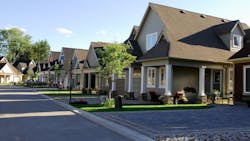As Affordability Concerns Grow, Homebuyers Shift Their Focus
Affordability concerns are reshaping the way Americans live, with most prospective buyers unable to afford traditional housing types. Results from the fourth "wave" of the America at Home Study—a nationwide survey conducted in partnership with the Housing Innovation Alliance and the University of Pittsburgh's Mascaro Center for Sustainable Innovation—report increasing financial worries among consumers, with 44% of survey respondents citing concerns about their jobs and the economy and 27% citing concerns about housing affordability and availabiltiy.
As these concerns trend upward, traditional methods of homeownership are becoming irrelevant, according to the report. Consumers are changing their perspective on housing in order to find homes that fit their budget, and builders are also changing their practices meet homebuyers where they're at.
Homebuyers are shifting their preferences to align with the realities of the housing market
Compromises among homebuyers has become increasingly common as affordability challenges take center stage. Since the third wave of America at Home Study, the willingness among to accept certain tradeoffs has grown significantly.
In the most recent survey, 40% of respondents reported they would accept a smaller home, up from 21% in January 2023. Additionally, 32% said they would accept a modular or manufactured home compared with 22% in the third wave of the survey, and 50% said they would accept a rent-to-own model, a jump from 33% in the previous iteration.
What are homebuyers not willing to budge on?
While they are willing to make some compromises, buyers are prioritizing simple, affordable, and attainable features that are functional and wellness-driven.
Of the respondents, 25% said they want a home that prioritizes energy efficiency, while 22% want a home that prioritizes clean air and clean water. The most important feature for buyers, however, was the kitchen, as 29% of respondents want a better-equipped and modern kitchen for cooking and entertaining.
These desires are reflected in communal spaces as well. At 54%, the most desired community feature was access to nature and outdoor activities. Additionally, 49% of respondents said they’re looking for walkability to retail and restaurants, and 48% want access to trails.
How can builders meet buyers' needs for livable, walkable communities while still prioritizing affordability?
- How to Use Design to Beat Rising Costs: During the early stages of a home building project, builders and architects can work together to cut out unnecessary design features and keep costs low.
- 4 Single-Family Build-to-Rent Home Designs Offering Comfort and Construction Efficiency: Single-family build-to-rent housing has exploded in popularity in recent years as it offers a long-term rental option at a more affordable price than homeownership.
- Duplexes Are Back: Increasingly being proposed as an infill solution, duplexes are just one way to improve housing supply and promote affordability.
